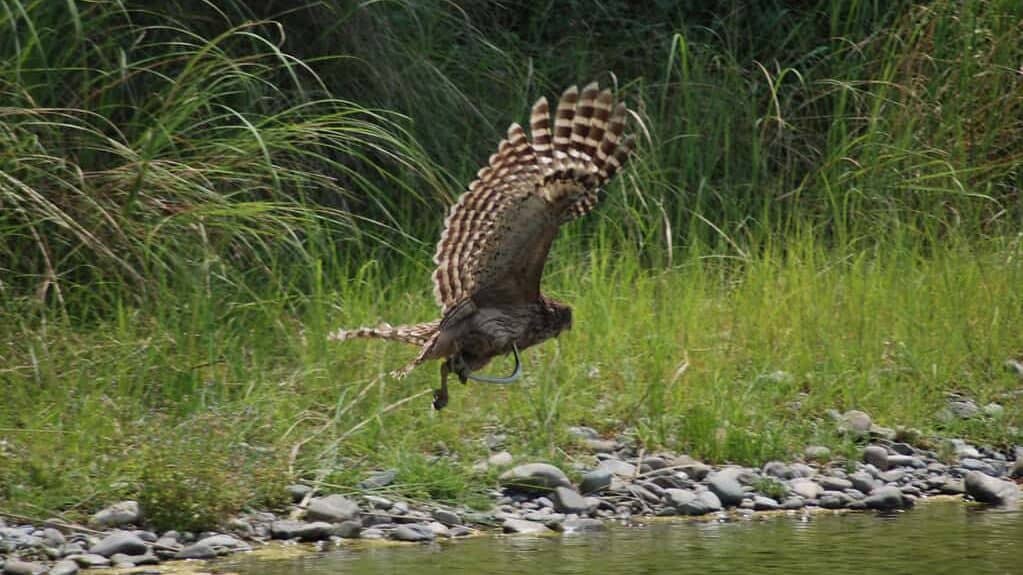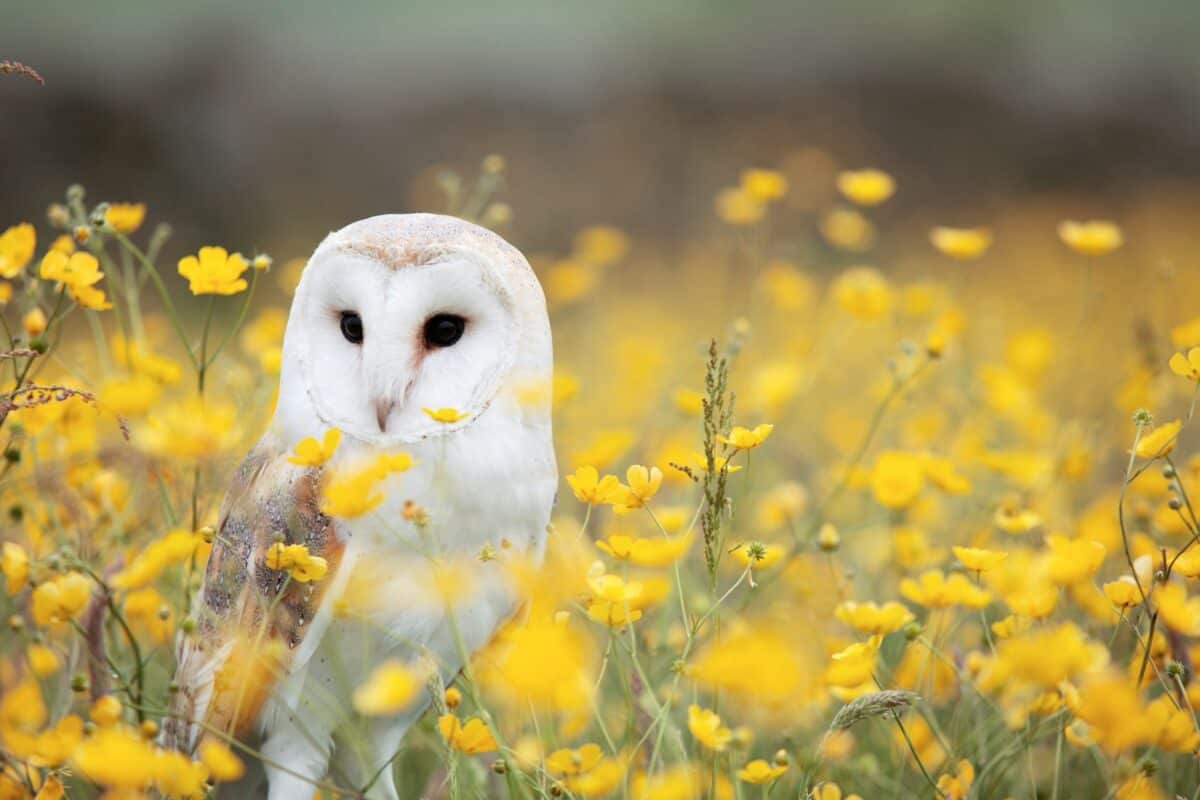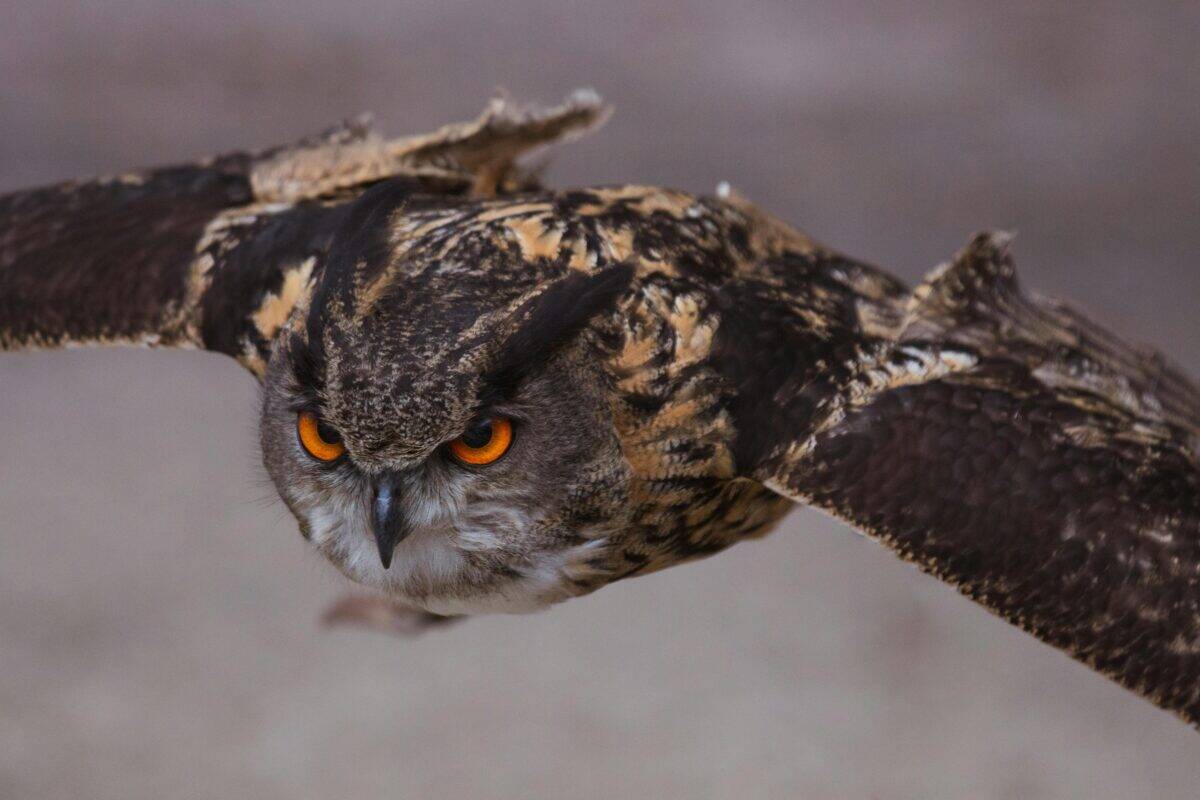Owls have captivated human imagination since ancient times, becoming fixtures in mythology, folklore, and cultural traditions across civilizations. With their silent flight, nocturnal habits, and piercing gaze, these enigmatic birds have inspired both dread and admiration. Their ability to see in darkness and rotate their heads nearly 270 degrees has contributed to their supernatural reputation, making them symbols of wisdom in some cultures while representing death and misfortune in others. From ancient Greece to indigenous American tribes, from medieval Europe to modern-day Asia, owls have maintained their status as creatures of mystery and power.
This duality in how humans perceive owls reveals much about our relationship with the natural world and the unknown. Unlike most birds that are active during daylight hours, owls operate in the shadows, hunting when most humans seek shelter. This article explores ten compelling reasons why these remarkable raptors have been simultaneously feared and revered across millennia, shaping cultural narratives and spiritual beliefs that persist to this day.
Messengers of Death and Ill Omens

In numerous cultures worldwide, the hoot of an owl has been interpreted as a harbinger of death or misfortune. This association stems partly from their nocturnal nature and eerie calls that pierce the silence of night. In ancient Rome, the death of several prominent figures, including Julius Caesar and Augustus, was reportedly preceded by owl sightings, cementing their reputation as birds of ill omen. Similarly, in many parts of India, Africa, and the Middle East, owls are considered messengers of death, with their calls believed to forecast the passing of someone nearby.
The English countryside preserved this superstition well into the 20th century, where farmers would nail dead owls to barn doors to ward off evil and lightning strikes. In Native American traditions, particularly among tribes like the Lakota and Apache, owls were sometimes associated with ghosts and the recently deceased, believed to carry messages from the afterlife. This connection to death wasn’t always negative, however, as some cultures viewed owls as necessary guides who helped souls transition to the afterlife.
Symbols of Wisdom and Knowledge

Perhaps the most celebrated positive association with owls is their reputation for wisdom, a concept that traces back to ancient Greece. The owl, particularly the Little Owl (Athene noctua), was sacred to Athena, the goddess of wisdom, handicraft, and warfare. This connection was so strong that the bird became the symbol of Athens, appearing on their currency and reinforcing the city’s identity as a center of learning and philosophy. The owl’s large, forward-facing eyes gave it an appearance of thoughtfulness and contemplation that resonated with Greek ideals of intelligence.
This association continues in modern times, with owls frequently appearing as symbols in educational institutions and academic settings. The owl’s ability to see through darkness has been metaphorically linked to seeing through ignorance to knowledge. Even in contemporary popular culture, owls often represent wise mentors or teachers, from Owl in Winnie the Pooh to the mail-carrying owls of Harry Potter. This enduring symbol demonstrates how deeply the association between owls and wisdom has penetrated human consciousness across centuries.
Masters of the Nightv

Owls’ exceptional adaptation to darkness has contributed significantly to their mystical reputation. With specialized night vision that allows them to hunt in minimal light, owls represent mastery over a realm that has historically instilled fear in humans. Their eyes can be up to 100 times more sensitive than human eyes in low-light conditions, thanks to a high concentration of rod cells, a reflective layer behind the retina called the tapetum lucidum, and extraordinarily large eyes relative to their skull size. This visual superiority in darkness has led many cultures to associate owls with hidden knowledge and the ability to perceive what others cannot.
Their silent flight, made possible by specialized feathers that muffle sound, adds to their ghostly presence. Unlike other birds, owls can swoop down on prey with virtually no noise, a trait that has contributed to their perception as supernatural beings. In medieval Europe, this silent movement reinforced beliefs that owls were associated with witches and dark magic, capable of appearing and disappearing without warning. Their dominion over the night sky made them both feared predators and respected guardians of the darkness in different cultural traditions.
Sacred Birds in Ancient Civilizations

Beyond Greece, owls held sacred status in numerous ancient civilizations. In Egyptian mythology, the owl was associated with death but also functioned as a protector of the underworld. Hieroglyphics featuring owls represented the sound “m” and symbolized darkness, night, and death. The owl-headed figures found in some Egyptian art represented spirits moving between worlds. Meanwhile, in ancient Celtic cultures, owls were considered sacred birds that possessed prophetic powers and could access secret knowledge.
In pre-Columbian Mesoamerica, particularly among the Aztec and Maya, owls had complex symbolic meanings associated with rain, fertility, and the underworld. The Moche people of Peru created numerous ceramic vessels depicting owls, suggesting their cultural significance. Archaeological evidence indicates that in some ancient civilizations, owls were not merely symbols but active participants in religious ceremonies, with their feathers and body parts used in rituals intended to harness their perceived spiritual powers. This sacred status helped preserve owl populations in some regions, as killing these divine messengers was often taboo.
Witches’ Companions and Familiars

During the height of European witch hunts from the 15th to 18th centuries, owls became strongly associated with witchcraft and sorcery. These nocturnal birds were believed to be familiars—spiritual entities that assisted witches in their magical practices, often taking animal form. This association was strengthened by the owl’s nocturnal habits, which aligned with the belief that witches conducted their ceremonies at night. The owl’s ability to see in darkness was equated with a witch’s supposed ability to see beyond normal human perception into the spiritual realm.
Historical records from witch trials across Europe mention owls as companions of the accused, with their hoots interpreted as communication between witches or signals for coven gatherings. In some regions, simply having an owl roost near one’s home could raise suspicion of witchcraft. Shakespeare reinforced this connection in Macbeth with the famous line “It was the owl that shrieked, the fatal bellman,” linking the owl’s call to the impending murder of King Duncan. This association with witchcraft caused widespread persecution of owls, contributing to population declines in parts of Europe and reinforcing their status as creatures to be feared.
Shape-Shifters and Soul Carriers

Many indigenous cultures across continents have traditions describing owls as shape-shifters or beings capable of transformation between human and bird forms. In various Native American tribes, including the Hopi and Ojibwe, legends tell of powerful medicine people who could transform into owls to travel between worlds or gather secret knowledge. Similar beliefs existed in parts of Africa, where owls were sometimes thought to be physical manifestations of powerful shamans or witchdoctors capable of transmigration between bodies.
In addition to shape-shifting, owls have been widely regarded as carriers of souls. In ancient Japan, owls (known as “fukurō”) were considered protectors against suffering but also had associations with the transportation of souls to the next world. Some Mongolian and Siberian shamanic traditions held that the spirits of shamans traveled in owl form during trance states. The Seri people of Mexico believed owls carried the souls of the dead to the afterlife, while Welsh folklore suggested that the hoot of an owl indicated an unmarried girl had just lost her virginity—a symbolic “death” of innocence carried on the owl’s call. These beliefs reflect humanity’s attempt to understand the mystery of death and transformation, with owls serving as powerful metaphors for these transitions.
Agricultural Guardians and Pest Controllers

Despite fearsome reputations in some contexts, owls have long been recognized as invaluable allies in agriculture. A single barn owl can consume over 1,000 rodents annually, making these birds natural pest controllers that protect grain stores and crops. Ancient civilizations, including the Egyptians and Romans, recognized this benefit, sometimes encouraging owls to nest near granaries. In parts of rural Asia, particularly Malaysia and Indonesia, farming communities have traditionally built nest boxes for owls specifically to control rat populations in rice fields, a practice that continues today in organic farming.
This agricultural benefit has sometimes created a tension between superstitious fear and practical appreciation. In medieval Europe, some farmers recognized the practical benefits of having owls nearby despite widespread superstitions, leading to complex relationships with these birds. In modern times, sustainable farming practices increasingly incorporate “owl-friendly” approaches, including the installation of owl boxes and reduction of rodenticides. The recognition of owls as agricultural guardians has contributed to conservation efforts worldwide, as farmers recognize that a healthy owl population translates to natural, cost-effective pest management.
Prophets and Diviners

Throughout history, owls have been attributed with prophetic abilities and the power to predict future events. In ancient Rome, augurs (religious officials) interpreted the flights and calls of owls as messages from the gods, using these observations to make predictions about military campaigns or political decisions. The Romans were not alone—similar practices existed in ancient Greece and parts of the Middle East, where owls were thought to possess knowledge of future events. Their calls were carefully analyzed for timing, direction, and patterns that might reveal hidden truths about what was to come.
This association with prophecy extended beyond Western civilizations. In parts of Africa, owl sightings were interpreted as warnings of impending danger or significant change. Among certain Native American tribes, including the Hopi and Navajo, owls were respected as keepers of sacred knowledge and seers of truths invisible to humans. The belief in owls as diviners stems partly from their acute senses and mysterious behavior—they appear to detect things humans cannot, whether it’s prey hiding beneath snow or approaching weather changes. This natural sensitivity has been mythologized into supernatural foresight, positioning owls as creatures bridging the known and unknown.
Totems and Spirit Animals

In numerous indigenous traditions worldwide, owls feature prominently as power animals or totems that convey special abilities to those connected with them. Among certain Plains Indian tribes, warriors who received owl medicine in visions were believed to gain night vision or enhanced awareness in battle. The Kwakiutl people of the Pacific Northwest incorporated owl symbolism into their masks and ceremonies, drawing on the bird’s perceived powers of transformation. These connections weren’t always positive—some tribes viewed owl totems as dangerous or associated with taboo knowledge, requiring special handling of this spiritual power.
The concept of the owl as a spirit guide continues in contemporary spiritual practices. In modern neo-shamanism and certain New Age traditions, owl spirit animals represent intuition, the ability to see beyond deception, and wisdom in navigating life’s darkest passages. The owl’s liminal status—active when others sleep, seeing what others cannot—makes it a powerful metaphor for psychological insight and spiritual awakening in these contexts. Whether ancient or modern, the concept of owl totems reflects humanity’s desire to understand and potentially harness the owl’s remarkable abilities, transforming natural adaptations into spiritual teachings.
Environmental Indicators and Weather Prophets

Long before modern meteorology, many rural communities relied on animal behavior to predict weather changes and environmental conditions. Owls played a significant role in this folk meteorology across multiple continents. In parts of Europe, unusual daytime activity from normally nocturnal owls was interpreted as a warning of approaching storms. The pitch and frequency of owl calls were thought to predict temperature changes—a screech owl’s tremulous call was said to foretell cold weather in parts of North America. These associations weren’t merely superstitious but often reflected real changes in owl behavior in response to barometric pressure shifts and other pre-storm conditions.
Beyond weather prediction, owls have served as indicators of ecosystem health. Their position as apex predators makes them sensitive to environmental changes and toxins that accumulate through the food chain. Native communities often recognized that changes in owl populations signaled broader environmental shifts. This traditional ecological knowledge has been validated by modern science, with owl populations now monitored as bioindicators of habitat quality and environmental contamination. The historic recognition of owls as environmental prophets reflects an intuitive understanding of their ecological importance, connecting traditional wisdom with contemporary conservation science.
Mythological Transformations and Divine Messengers

Across world mythologies, owls frequently appear as transformational figures or divine messengers operating between realms. In Welsh mythology, the goddess Blodeuwedd was transformed into an owl as punishment for betrayal, creating an enduring association between owls and betrayed lovers. Greek mythology features tales of Ascalaphus, transformed into an owl by Demeter for revealing secrets of the underworld. These transformation myths highlight the owl’s liminal status—neither fully of this world nor entirely otherworldly, capable of traversing boundaries that separate different states of being.
As divine messengers, owls have played crucial roles in various religious traditions. In Hindu mythology, the white owl serves as the vahana (mount) of Lakshmi, goddess of wealth and prosperity, carrying her messages throughout the world. Some Australian Aboriginal dreamtime stories portray owls as messengers between the living and ancestral spirits. The Bambara people of Mali traditionally viewed the owl as a messenger from the creator deity. These diverse mythological roles reveal how owl symbolism transcends cultural boundaries, with their distinctive attributes—acute senses, silent movement, and nighttime activity—making them perfect embodiments of communication between visible and invisible realms.
Conclusion: The Enduring Legacy of Owl Symbolism

The complex symbolism attached to owls continues to resonate in contemporary culture, demonstrating the remarkable staying power of these ancient associations. From corporate logos to tattoo art, from literary symbolism to conservation mascots, owls maintain their dual status as creatures of wisdom and mystery. This enduring fascination reflects the deep psychological impact these birds have had on human consciousness across millennia. While scientific understanding has dispelled many superstitions surrounding owls, their symbolic power remains largely intact, speaking to fundamental human concerns about knowledge, darkness, death, and transformation.
Modern conservation efforts benefit from this cultural significance, as many people feel compelled to protect owls not only for ecological reasons but also for their cultural and spiritual importance. As we face growing environmental challenges, the ancient reverence for owls offers a model for recognizing the inherent value of wildlife beyond utilitarian concerns. The owl’s journey through human history—from feared omen to celebrated icon of wisdom, from witch’s familiar to environmental ambassador—demonstrates how our relationship with the natural world evolves while maintaining threads of continuity with our ancestral past. In their silent flight and watchful gaze, owls continue to connect us with something beyond ourselves, reminding us of the mysteries that persist even in our scientifically advanced world.
- 10 Reasons Owls Have Been Feared and Revered for Centuries - August 14, 2025
- The Survival Strategy Behind Why Lions Share Their Kills - August 14, 2025
- 10 Cool Animals You Can See in Egypt - August 14, 2025

